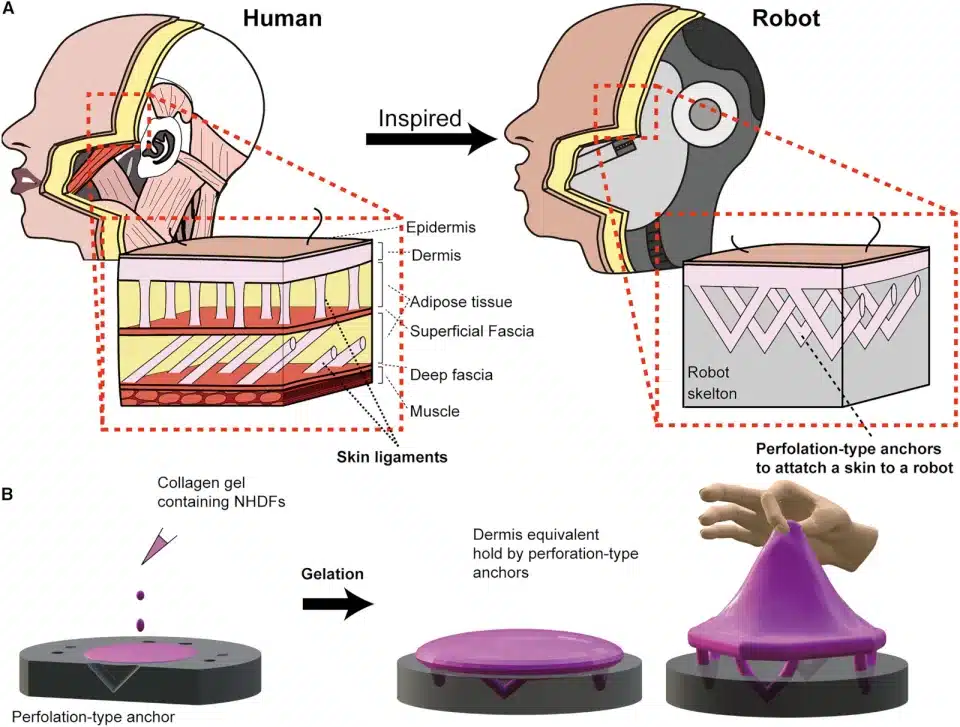A team of researchers from the University of Tokyo and Harvard University is working on a revolutionary method for attaching synthetic skin to robotswith the goal of creating humanoids so lifelike that they have skin that looks and behaves like humans. Imagine a future where robots not only look like us, but their skin can heal and move just like ours.
The secret is in the ligaments
Currently, modeling techniques to create skin equivalents that fit perfectly into 3D structures such as robot fingers are not they foresee a mechanism for “fixing the skin to the underlying subcutaneous layer.” The researchers, in their study published in Cell Reports Physical Sciencethey used a technique called “perforated anchors,” inspired by skin ligaments.
Dermal ligaments are what keep our skin attached to the tissues and muscles underneath, preventing it from moving like cloth on a mannequin every time we move. The team plans to use these perforated anchors to replace ligaments in robots. To demonstrate the effectiveness of the method in attaching synthetic skin to “3D objects with intricate contours,” the researchers modeled synthetic skin on a dummy head.

A skin that smiles
The next step was to create a robotic face covered in a dermis equivalent that could smile. When the machine performs a “gliding motion” to mimic the way our faces move when we smile, the synthetic skin deforms to create a smiling expression. While the result may seem unsettling to some, we think the cute pink blob resembles an adorable meme character.
Imagine a world where robots can express emotions through their faces. This is just the beginning of a new era in robotics, where the distinction between human and machine is becoming increasingly blurred. What other applications do you think these developments could have in our daily lives?
#frontier #robotic #synthetic #skin #synthetic #skin #smiles
